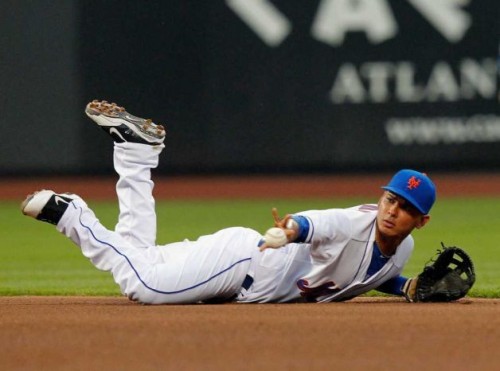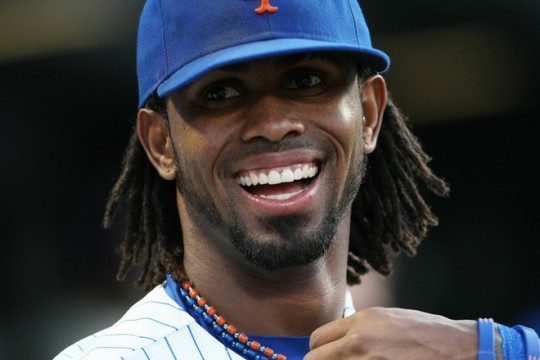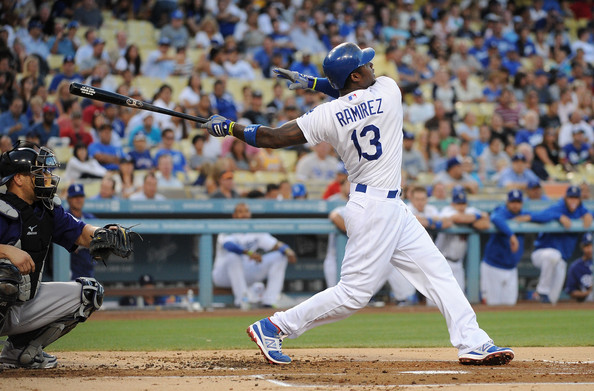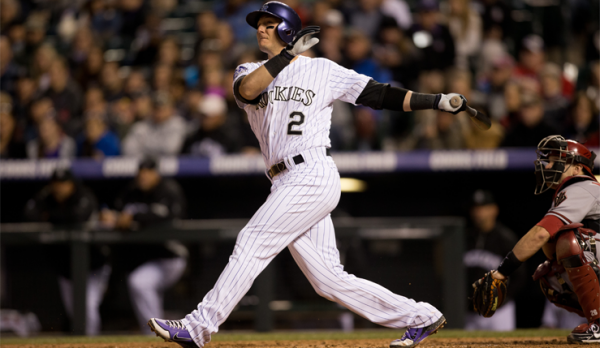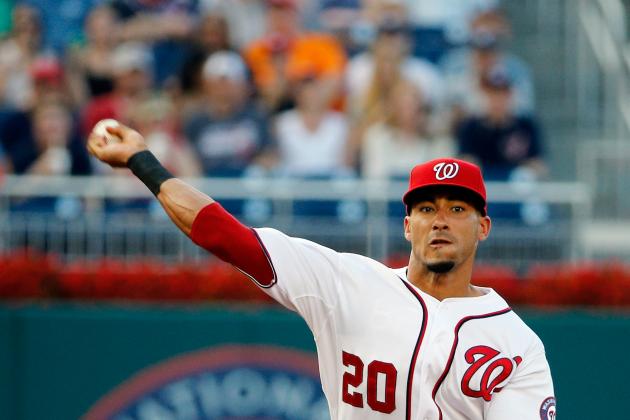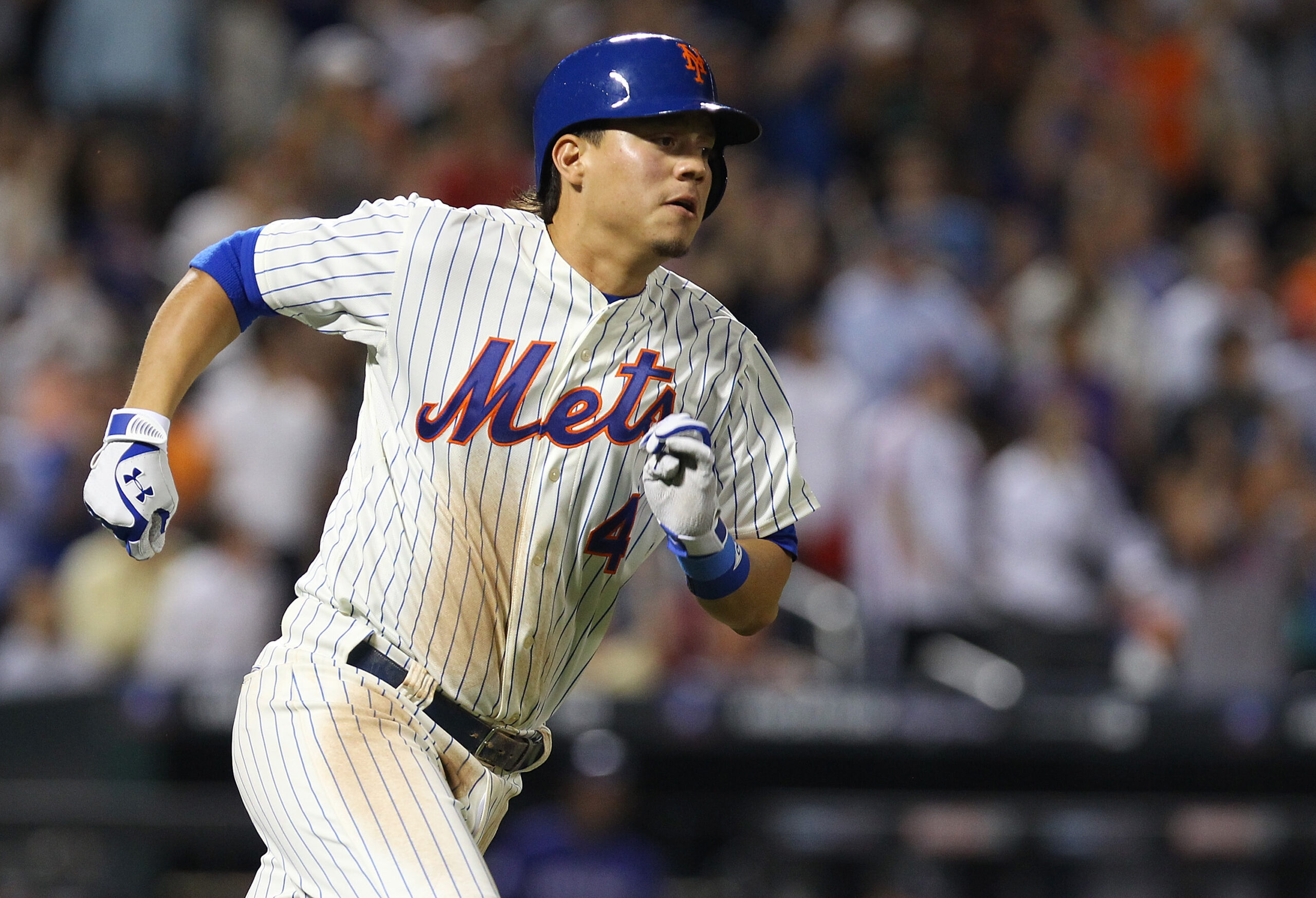The Mets’ need for a shortstop, alleged search for a shortstop, inability to actually acquire a shortstop, and (naturally) continued lack of production from the shortstop position has been a most frustrating combination for Mets fans ever since Jose Reyes was allowed to walk away in free agency (excluding a couple decent stretches from Ruben Tejada, who has otherwise regressed since he was given a starting job).
Each of the last few seasons has been portrayed by the team as “The Year” — “Matt Harvey is ready! No, wait, Zack Wheeler is ready! Hey, look! Travis d’Arnaud is here!!!” — but the early signing of Michael Cuddyer this winter (at the expense of a first-round pick), the 2014 2nd-place finish in what is shaping up to be a not-too-intimidating NL East, promising performances in ’14 from some of our younger guys, the return of Matt Harvey, and the fact that David Wright has to be better than the injured shell of himself he was last season— all of these things encouraged Mets fans into believing that 2015 just might be the year the Mets are serious about “This Year.”
And then the Mets did nothing. Some non-moves were justified— a team with a strong rotation shouldn’t be expected to splurge on an ace pitcher. In fact, the Mets don’t really have too many positional holes. They have a 30 homer guy at first base, a very solid hitter at second base, a franchise player at third, one of the game’s most promising young catchers, a Gold Glove winner with a nice bat in center, and, after their early splash, a recent batting champion in left field. In right field, Curtis Granderson is a guy with 40-HR power who managed 20 HR in a down season (and a big ballpark). The bullpen ranked eighth in ERA last season, and we’ve all heard about the starting rotation.
Now— and this is mostly a topic for another article— the Mets could have upgraded at positions where they were already “fine.” “Fine” doesn’t make you a contender, so the Mets shouldn’t be content at all positions where they don’t have a gaping hole. That’s not enough. Teams need to be creative, and Sandy Alderson hasn’t shown much creativity. But the main gripe is– and should be–at the shortstop position.
The Mets stood pat in free agency when it came to the shortstop market, barely considering any of the main guys who were available (such as Hanley Ramirez). They spent their free agency dollars to fill their outfield spot when the trade market was more appealing for outfielders, and looked to use their trade chips to get a shortstop even though the price of a shortstop in trades appears to be astronomically high these days. You could argue their problems began here— they should have gone for a slugger in the outfield, so they could have gotten a contact-and-defense guy to play short.
But hey, nothing wrong with a nice trade. So why didn’t the Mets make any? Sure, teams were overreaching at first. Starlin Castro might not actually be worth two or three top prospects, for example. Didi Gregorius is decent and didn’t cost the Yankees too much, but the Mets were being asked to pay far more than the Diamondbacks ended up getting for him, and at this point, the Mets should probably be in the market for a more offensive-minded shortstop anyway. Jimmy Rollins could have been a nice fit, but reports (some of which have been disputed) suggested that he didn’t want to be a Met.
So when the two best offensive shortstops in the game hit the market, you pounce, right? It’s what the Yankees would do if they had the prospects to trade. But the Mets aren’t the Yankees. So despite being towards the tail-end of an offseason when Troy Tulowitzki and Ian Desmond both became available, the Mets appear poised to begin the 2015 campaign with Wilmer Flores, a good offensive shortstop who isn’t a shortstop and has only been good offensively in the minor leagues.
We know all about the risk factors with Tulowitzki. He would cost a lot in terms of trade chips, and he comes with a serious financial commitment. All of which would be fine (one would think; nothing is guaranteed when it comes to the Mets and their finances), because Tulo is a superstar. But he’s only a superstar when he’s on the field, and far too often in recent years, that has not been the case. If the Mets were to put so many eggs in such an injury-prone basket, the move could end up being disastrous.
Desmond is also a terrific player, and the Washington shortstop has managed to stay on the field far more often than his Colorado counterpart. He would probably cost a bit less, too, and taking him away from a division rival would certainly be a nice bonus. But Desmond has only one year left on his contract, and has been completely unwilling to sign an extension with the Nationals thus far. Like Tulowitzki, Desmond comes with risk, in his because of the fact he could flee after the season.
The Mets apparently have not been involved in advanced talks for Tulowitzki, despite the fact that both teams know they match up well for a deal. It seems that a trade for Tulo might be more feasible closer to the trade deadline, when it will be more clear where the Mets stand in the National League (which might increase their interest) as well as how healthy Tulowitzki is after hip surgery (which might increase the cost).
A Tulo package might cost at least one top pitching prospect (Noah Syndergaard or Steven Matz), another pitcher (Jon Niese? Dillon Gee?), maybe a hitting prospect or two (Kevin Plawecki? Flores?) and/or maybe a more established hitter (Daniel Murphy?). The Mets would also have to take on Tulo’s contract, which might reduce the amount they have to give to the Rockies in terms of assets. What’s for certain is that it would be a costly deal, but the Mets would be getting a superstar for their trouble albeit one with a very concerning injury history.
The Mets did have some more specific discussions about Desmond, reportedly getting involved in (and then pulling out of) discussions about a trade which would have landed Desmond in New York at the expense of Syndergaard, another top prospect, and possibly Dillon Gee. With Desmond only having one year left on his contract and the Mets not wanting to give up so much for a guy who might walk after one season, it was a reasonable decision for Alderson to walk away.
But what on earth is Alderson waiting for? Tulo and Desmond have their flaws, but if they didn’t these two studs wouldn’t be available. No team is going to be able to trade for the perfect player, because no team is going to be willing to trade away the perfect player. You can try to draft somebody, but it will take years for that player to arrive, and the Mets don’t have a first-rounder this year (it’s worth noting that losing Desmond in free agency would probably net them an compensatory first-rounder in the 2016 draft). Gavin Cecchini didn’t exactly blaze through the system. We could try tapping into the international market (Yoan Moncada looks appealing), but the Mets probably can’t go to battle with the top dogs when it comes to signing players. So taking a risk, trading for an expiring contract like Desmond, and then trying to sign the guy (you’re allowed to re-sign your own players, Sandy) in the winter might be the best—or only—move.
If Desmond helps make the Mets a contender, nobody will complain. If they struggle even after adding him, they could move him at the deadline. But being content to play it safe and keep waiting won’t work forever. When Syndergaard, Matz, and whichever other prospects the Mets want to horde are ready next year, Wright, Cuddyer, and Granderson will be a year older, Murphy might be gone, Bartolo Colon will be gone, and the Mets could very well end up trying to sell us on waiting four more years for a kid who is currently in tenth grade.
Maybe two top prospects is too much. Ken Rosenthal suggested the Mets try to deal Murphy and one top prospect for Desmond, and that is a deal I would probably do— re-signing Murphy and Desmond might be tough, but the Mets could certainly splurge to keep a great shortstop if they found themselves able to slot a cheap youngster like Flores or Dilson Herrera at second base. But would the Nationals be willing to take a deal like that? Who knows? (Well, Alderson could certainly find out by picking up the phone.)
So what’s going on? Why is Wilmer Flores going to be our shortstop, and why have we only made one relevant acquisition this winter? It all comes down to money. In free agency, that’s obvious. But the Mets’ financial woes plague them in trades as well. Let’s not waste time discussing whether the Mets can spend money, whether they should spend money, and the like. The Mets AREN’T spending money right now and certainly can’t be counted upon to do so in the near future.
Teams with low budgets can’t afford to take risks in a trade. They can’t trade for a guy who might be eating up what little payroll room they have while sitting on the disabled list. They can’t trade cheap, controllable prospects for guys who are expensive and might leave after one year, leaving the team with the original problem and now less surplus in trade chips.
A rich team can lose a trade, waste a top prospect, and fill the hole by signing a 30 year-old free agent (or these days, a young star from Cuba). But a “poor” team, and the Mets are sadly operating like one of those right now, can’t take these risks. Well, they can, and sometimes they might need to, but it’s certainly far less appealing to the guys who make the decisions, and for good reason.
So while it’s frustrating to see a big-market team not spending enough money to produce a winning product, fans also have to watch a general manager working under a set of constraints that discourage him from making trades that under normal circumstances would be no-brainers.
So, for many reasons, Wilmer Flores is our shortstop. And it’s frustrating, because we’ve been promised an upgrade at that position seemingly every offseason since Reyes left. Maybe Flores will be a solid contributor at the plate. He has potential, he has shown flashes, and he’s still young. But we can’t count on it, and we certainly can’t count on him to be good enough with the bat to compensate for his poor defense, which we can only hope will become average with practice.
On the bright side, the Mets, for the first time in a long time, should be buyers at the deadline rather than sellers, so we could see them trade for at least one impact bat mid-season. If the rest of the team plays well enough to warrant seriously “going for it” in 2015, Desmond, Tulo, or another legitimate shortstop could be a Met before too long. But there are no guarantees with this team. They have shown a lack of creativity, a lack of aggressiveness, and in some cases, an apparent lack of awareness when it comes to the nature of the market and the opportunities which can suddenly arise in any market.
The Mets won in 1986 without a star shortstop. Shortstop quality isn’t the lone factor in a team’s success. But the Mets don’t have many areas where they desperately need improvement (this is a good thing), and they appear to be on the cusp of relevance (also a good thing). So to see them stand pat while there is at least one obvious spot at which an upgrade can be made, and precious wins can be added, it’s certainly frustrating, and hopefully we won’t have to wait much longer.
*Note: This article was written in response to several mailbag questions centered around the Mets’ continuing shortstop search.


